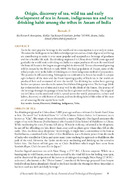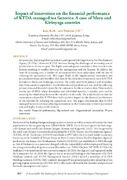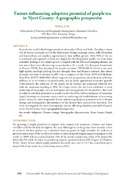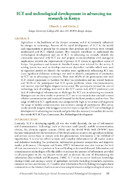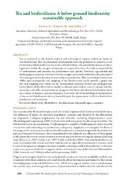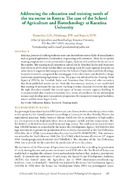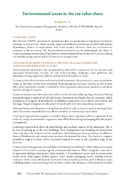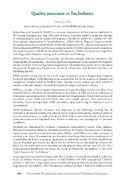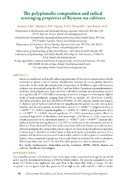Search
Now showing items 1-10 of 72
Origin, discovery of tea, wild tea and early development of tea in Assam, indigenous tea and tea drinking habit among the tribes in Assam of India
(2015)
Tea is the most popular beverage in the world and its consumption is next only to water.
The scientific findings on its health beneficial properties and as a drink of general wellbeing
are contributing to make it even ...
Impact of innovation on the financial performance of KTDA managed tea factories: A case of Meru and Kirinyaga counties
(2015)
Kenya is a key player in global tea industry and especially through Kenya Tea Development Agency (KTDA). However, KTDA has been facing the challenges of increasing cost of production in the recent past. The higher processing ...
Factors influencing adoption potential of purple tea in Nyeri County: A geographic perspective
(2015)
Kenya is the world’s third largest producer of tea after China and India. Tea plays a major
role in Kenya’s economy as it is the third major foreign exchange earner, behind tourism
and horticulture and employs approximately ...
ICT and technological development in advancing tea research in Kenya
(2015)
Agriculture is the backbone of the Kenyan economy and it is constantly influenced
by changes in technology. Because of the rapid development of ICT in the world,
each organization or person has to concern their products ...
Tea and biofertilizers: A below ground biodiversity sustainable approach
(2015)
Tea is produced in the humid tropical and sub-tropical regions, which are home to
rich biodiversity. The tea plantation environments have the potential to conserve a rich
biodiversity which could serve as a source of ...
Addressing the education and training needs of the tea sector in Kenya: The case of the School of Agriculture and Biotechnology at Karatina University
(2015)
In Kenya, personnel working in the tea sector are drawn from various fields of specialization
such as general agriculture, horticulture, engineering and economics. There are no special training programmes to train personnel ...
Environmental issues in the tea value chain
(2015)
The Director EEIPP's presentation pointed out that tea production is important for Kenya’s
economy in several ways. These include: direct and indirect contribution to GDP and exports dependency; Source of employment; and, ...
The polyphenolic composition and radical scavenging properties of Kenyan tea cultivars
(2015)
Interest in medicinal and health enhancing properties of functional components in foods
continues to arouse a lot of interest. Polyphenolic fractions in tea are potent bioactive
molecules. In this study, the polyphenolic ...
